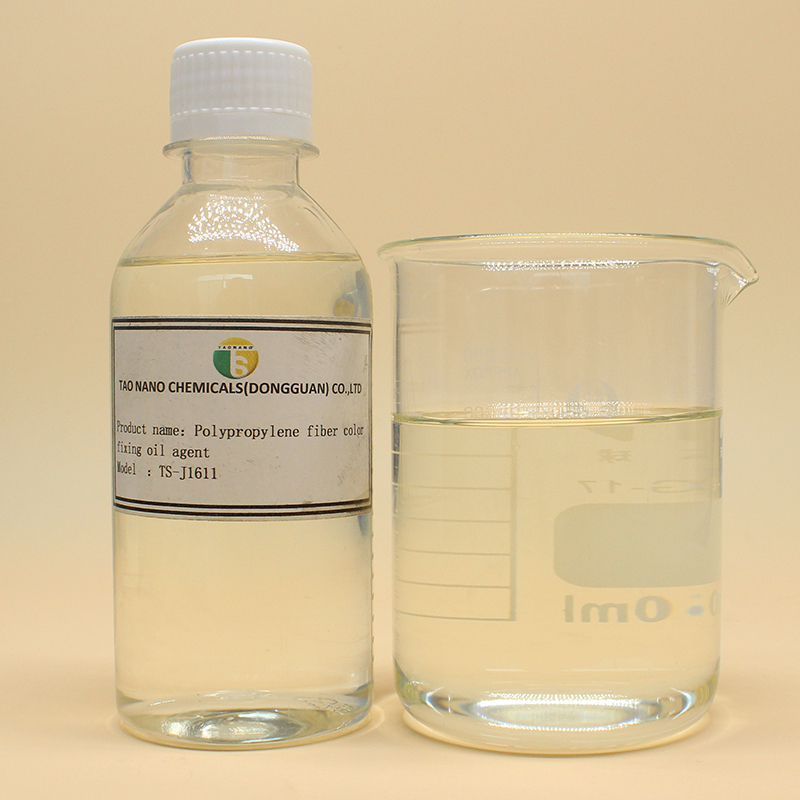- The rise of the Latin American market is expected to become a new growth pole for China's textile foreign trade
- Polypropylene yarn spinning oil is a key additive for enhancing the production efficiency of PP fibers
- The production process and market development prospects of polypropylene staple fiber
- The global trade landscape is undergoing significant changes in 2025
- Scientific selection of polypropylene spinning oil: Pay attention to components and performance indicators
- How can Polypropylene yarn spinning oil optimize your production process

- Contact: Miss Tang
- Telephone: 0086-18926870629
- Email: taonano@taonanooil.com
- Address:No. 59, Liantang Road, Sanzhong Village, Qingxi Town, Dongguan City, Guangdong Province
In the field of chemical fiber textiles, polypropylene (polypropylene) yarn is widely used in home, industrial fabrics and clothing due to its excellent properties such as light weight, high strength and anti-mold. However, from Polypropylene particles to a high-quality yarn, there is an indispensable "unsung hero" in the middle - Polypropylene yarn spinning oil. Although it will be washed away in the subsequent process, it plays a crucial role in determining the success or failure of the spinning process.
What is Polypropylene yarn spinning oil?
In simple terms, Polypropylene yarn spinning oil is a precision chemical agent specially designed for polypropylene fibers. It is not a single component, but a mixture scientifically compounded from various additives such as lubricants, antistatic agents, bundling agents and emulsifiers. Its main mission is to ensure a smooth and efficient melt spinning process and to endow the nascent fibers with excellent subsequent processing performance.
How does Polypropylene yarn spinning oil affect yarn quality?
Lubrication protection, reducing lint and breakage: During the high-speed spinning process, intense friction occurs between the fibers and the filament guide as well as the winding roller. High-quality Polypropylene yarn spinning oil can form a uniform and firm lubricating film on the surface of the fibers, effectively reducing the coefficient of friction. This not only protects the surface of the fibers from scratches and pilling, but also significantly reduces the breakage rate, directly enhancing production efficiency and the first-class product rate of the yarn.
Eliminate static electricity and ensure stable production: Polypropylene is a typical hydrophobic material and is prone to generating and accumulating static electricity due to friction during high-speed operation. Severe static electricity can cause the filaments to scatter, tangle, and fly, and even make production impossible. The antistatic components in the oil agent can neutralize the charge in time, ensuring the clarity of the silk road and good winding shape, thus safeguarding stable production.
Enhance bundling and optimize post-processing: The monofilaments just coming out of the spinneret are very fragile and scattered. The bundled components in the oil agent can endow the single filaments with appropriate cohesion, closely gathering them into a uniform filament bundle. This excellent bundling property is crucial for subsequent processes such as stretching, twisting, and weaving, and it is the foundation for obtaining structurally stable and strength compliant yarns.
- The rise of the Latin American market is expected to become a new growth pole for China's
- Polypropylene yarn spinning oil is a key additive for enhancing the production efficiency
- The production process and market development prospects of polypropylene staple fiber
- The global trade landscape is undergoing significant changes in 2025
- Scientific selection of polypropylene spinning oil: Pay attention to components and perfor
- How can Polypropylene yarn spinning oil optimize your production process



